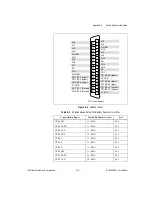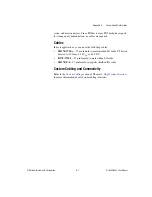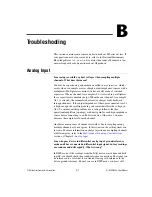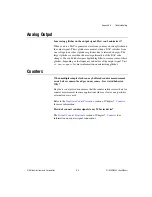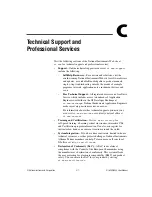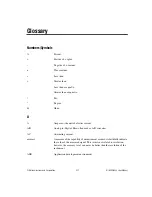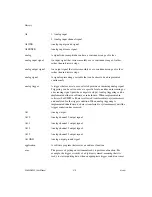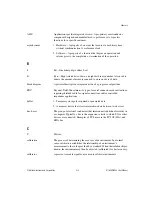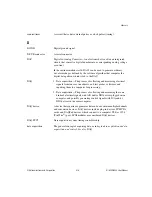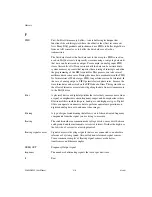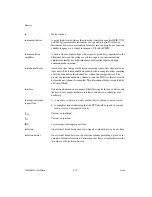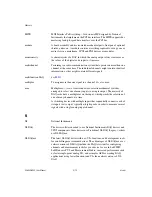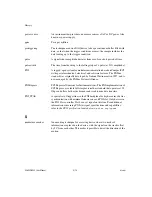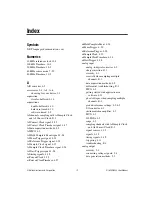
Glossary
©
National Instruments Corporation
G-7
digital signal
A representation of information by a set of discrete values according to a
prescribed law. These values are represented by numbers.
digital trigger
A TTL level signal having two discrete levels—a high and a low level.
DIO
Digital input/output.
DMA
Direct Memory Access—A method by which data can be transferred to/
from computer memory from/to a device or memory on the bus while the
processor does something else. DMA is the fastest method of transferring
data to/from computer memory.
DMA controller chip
Performs the transfers between memory and I/O devices independently of
the CPU.
driver
Software unique to the device or type of device, and includes the set of
commands the device accepts.
E
edge detection
A technique that locates an edge of an analog signal, such as the edge of a
square wave.
EEPROM
Electrically Erasable Programmable Read-Only Memory—ROM that can
be erased with an electrical signal and reprogrammed. Some SCXI modules
contain an EEPROM to store measurement-correction coefficients.
encoder
A device that converts linear or rotary displacement into digital or pulse
signals. The most popular type of encoder is the optical encoder, which uses
a rotating disk with alternating opaque areas, a light source, and a
photodetector.
external trigger
A voltage pulse from an external source that causes a DAQ operation to
begin.
EXTREF
External reference signal.

